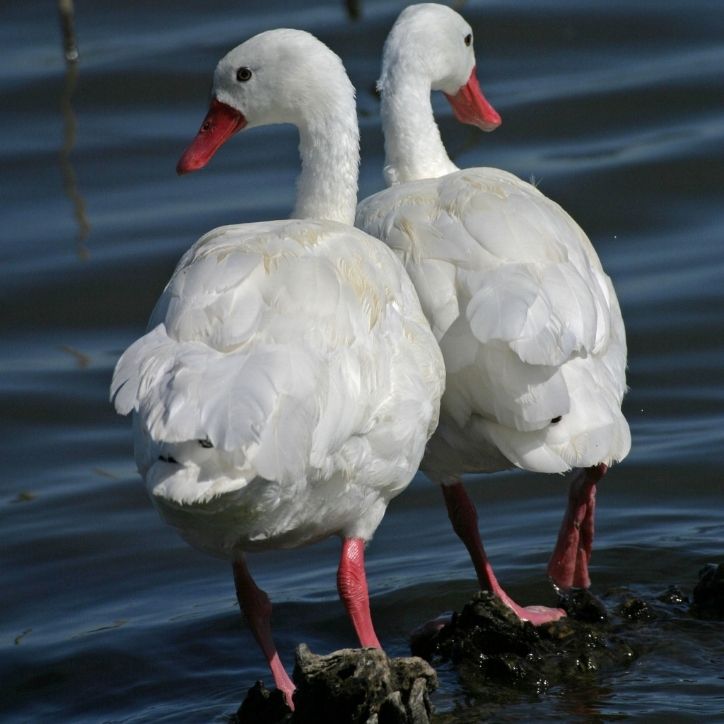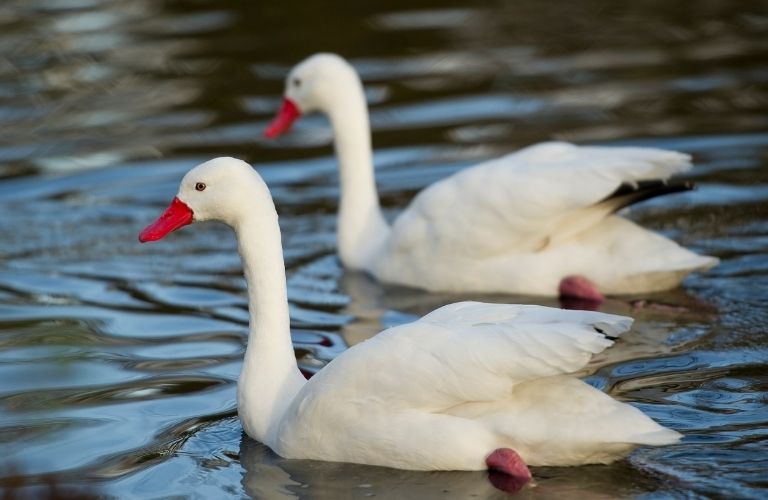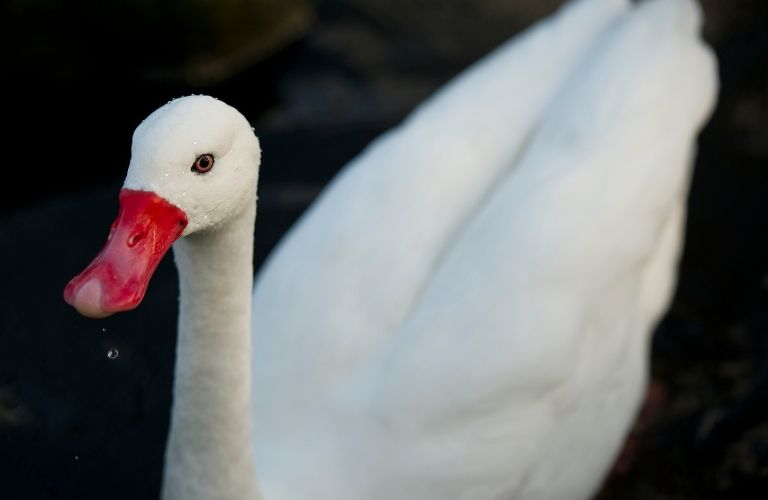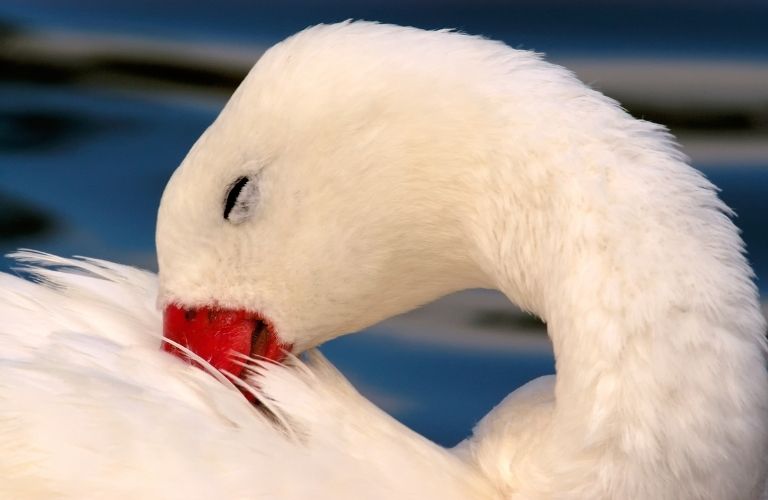The Coscoroba Swan is a spectacular waterfowl revered for its eccentric yet elegant appearance. It boasts an immaculate white plumage and a red beak that starkly contrast with the typical darker waters it dwells in. At Abilene Zoo, Coscoroba Swans intrigue visitors with graceful wades, prompting a deep dive into their core characteristics.
Diet
Coscoroba Swans are opportunistic feeders, subsisting on aquatic plants, small fish, and invertebrates. They often forage in shallow waters, dipping their heads below the surface to reach food. This feeding habit nourishes the Coscoroba Swan and maintains the health of wetland ecosystems, as it helps control amphibious plant growth and the populations of small aquatic creatures.
Habitat
Coscoroba Swans are endemic to South America. They inhabit diverse wetland environments from southern Chile and Argentina to the Falkland Islands, with some traveling as far north as Brazil during winter. They nestle in shallow lakes, marshes, and coastal lagoons, where they can find abundant food and nesting havens. This ecological adaptation makes Coscoroba Swans a key species in regional biodiversity.
Size and Weight
Coscoroba Swans are the smallest of the swan species. Even so, they still command a notable presence. Adults measure about 1 meter in length and weigh between 3.5 to 5.5 kilograms. Their stature, dazzling plumage, and striking red beaks and legs make them a marvelous sight to behold, be it in flight or on water.
Migration
The Coscoroba Swan is partially migratory; its pilgrimage is influenced by regional climate. During winter, they migrate from the colder southern parts of their range to the warmer north. This movement is critical for their survival as it gives them access to sufficient food and breeding grounds away from the harsh south.
Life Span
Coscoroba Swans lead long lives, often up to 20 years in the wild. This remarkable lifespan is attributed to their adaptive capacities and relatively safe habitats which shield them from many natural predators. Coscoroba Swans can sometimes exceed this age in managed environments such as zoos where they receive consistent veterinary attention and optimized diets.
This longevity also enables them to form long-term monogamous bonds, which aid in their breeding success and social structure.
Conservation Status
Coscoroba Swans are currently listed as of Least Concern by the IUCN. While they have a large range and a seemingly stable population, they grapple with habitat loss due to wetland drainage and environmental pollution.








